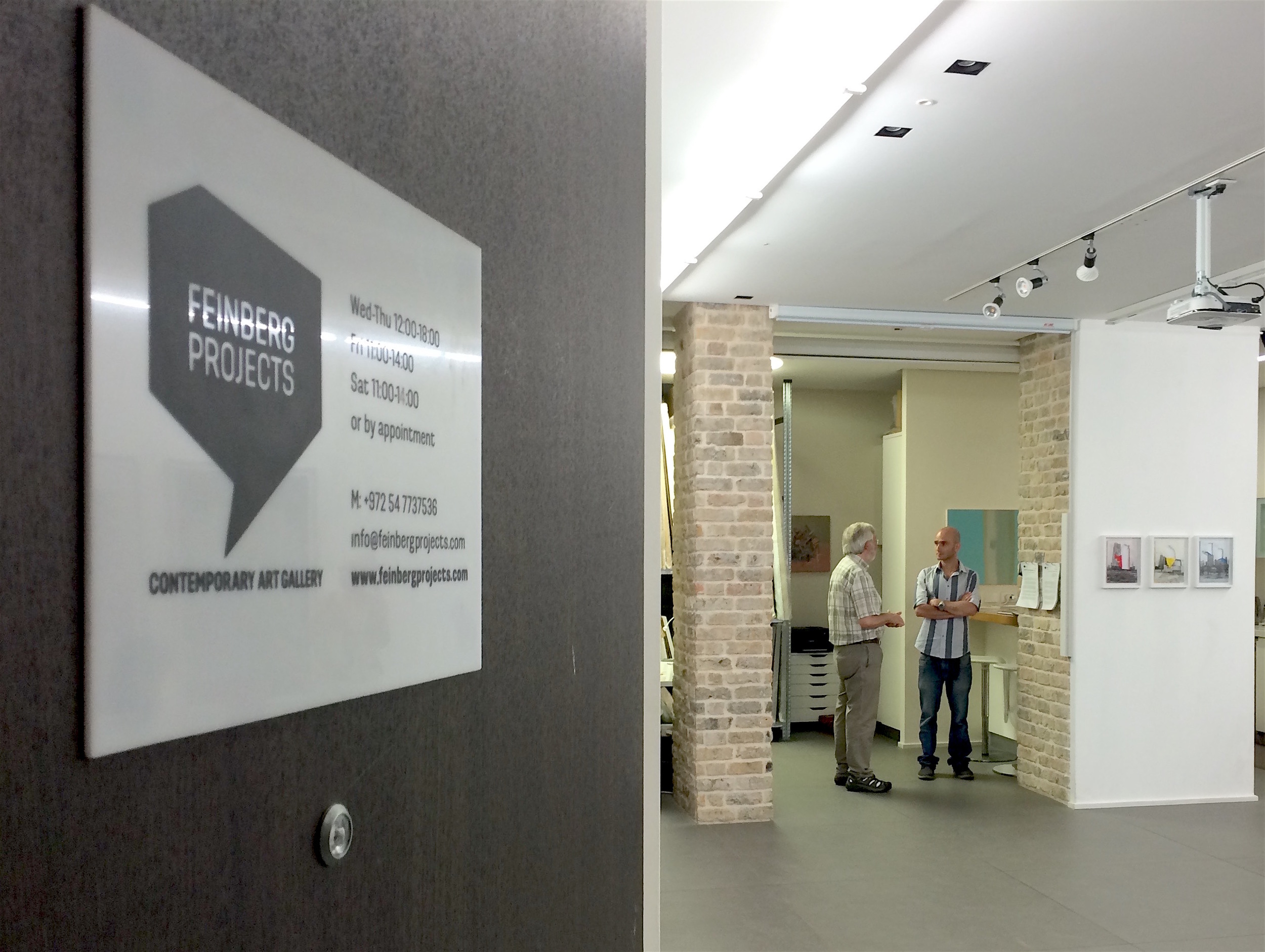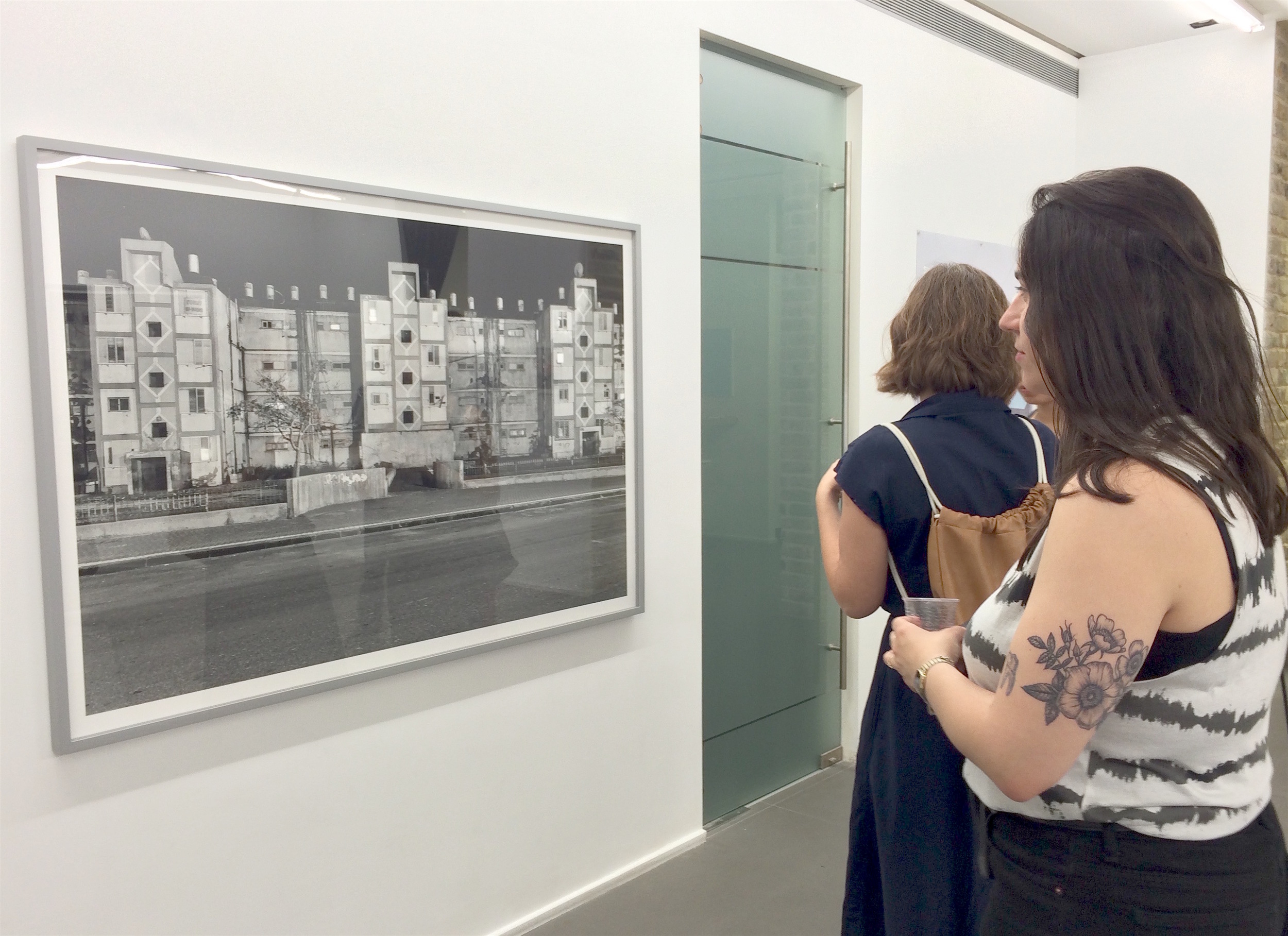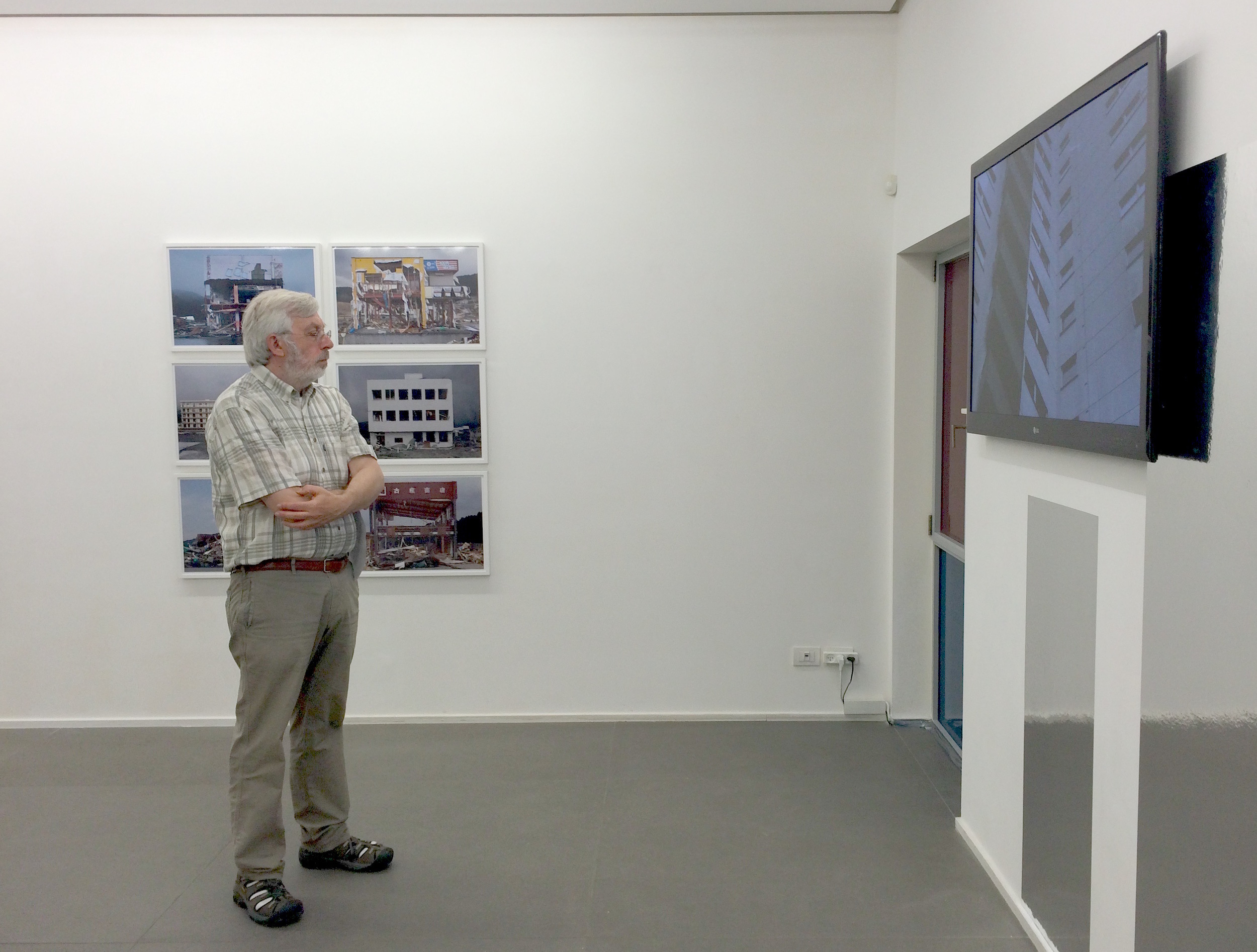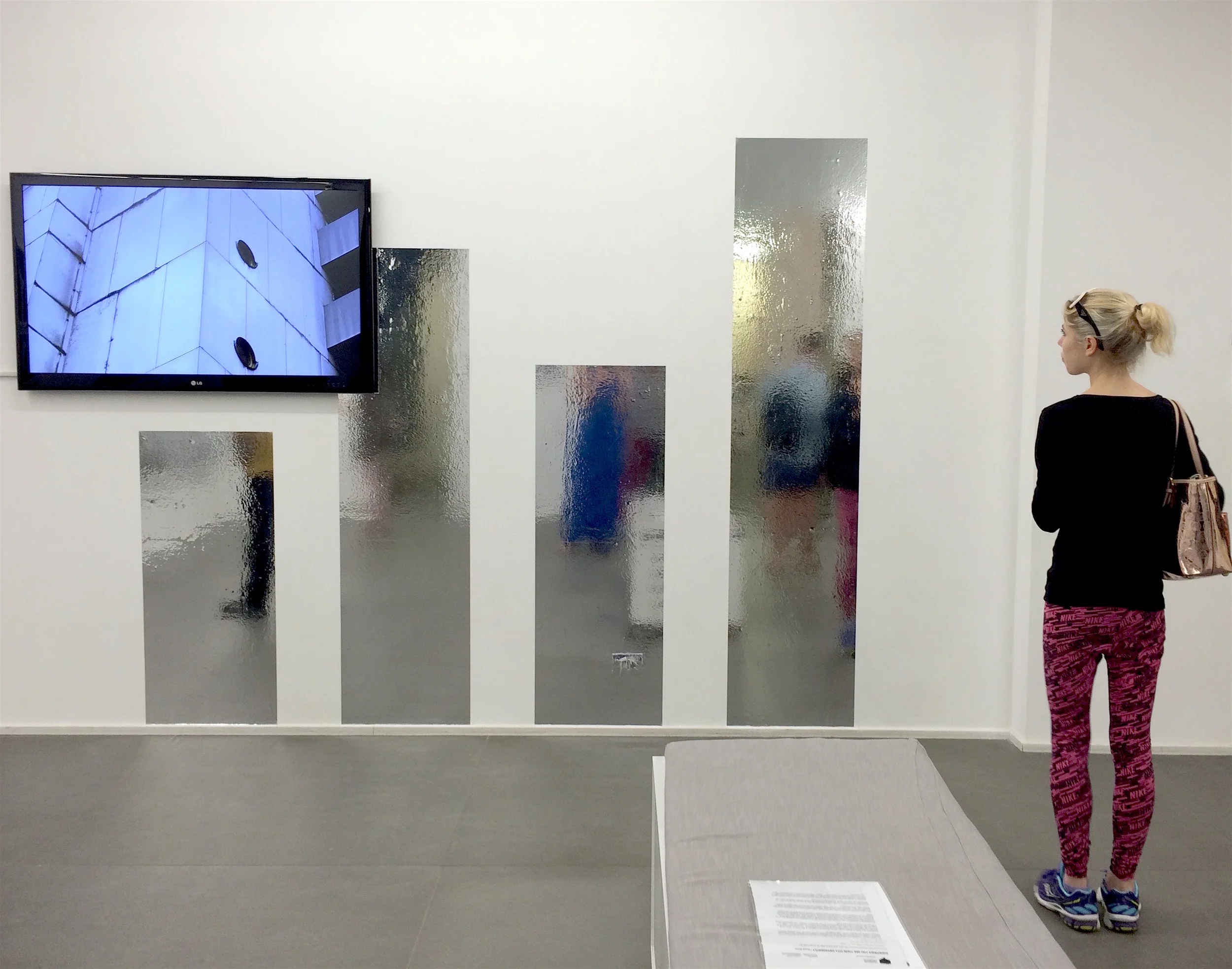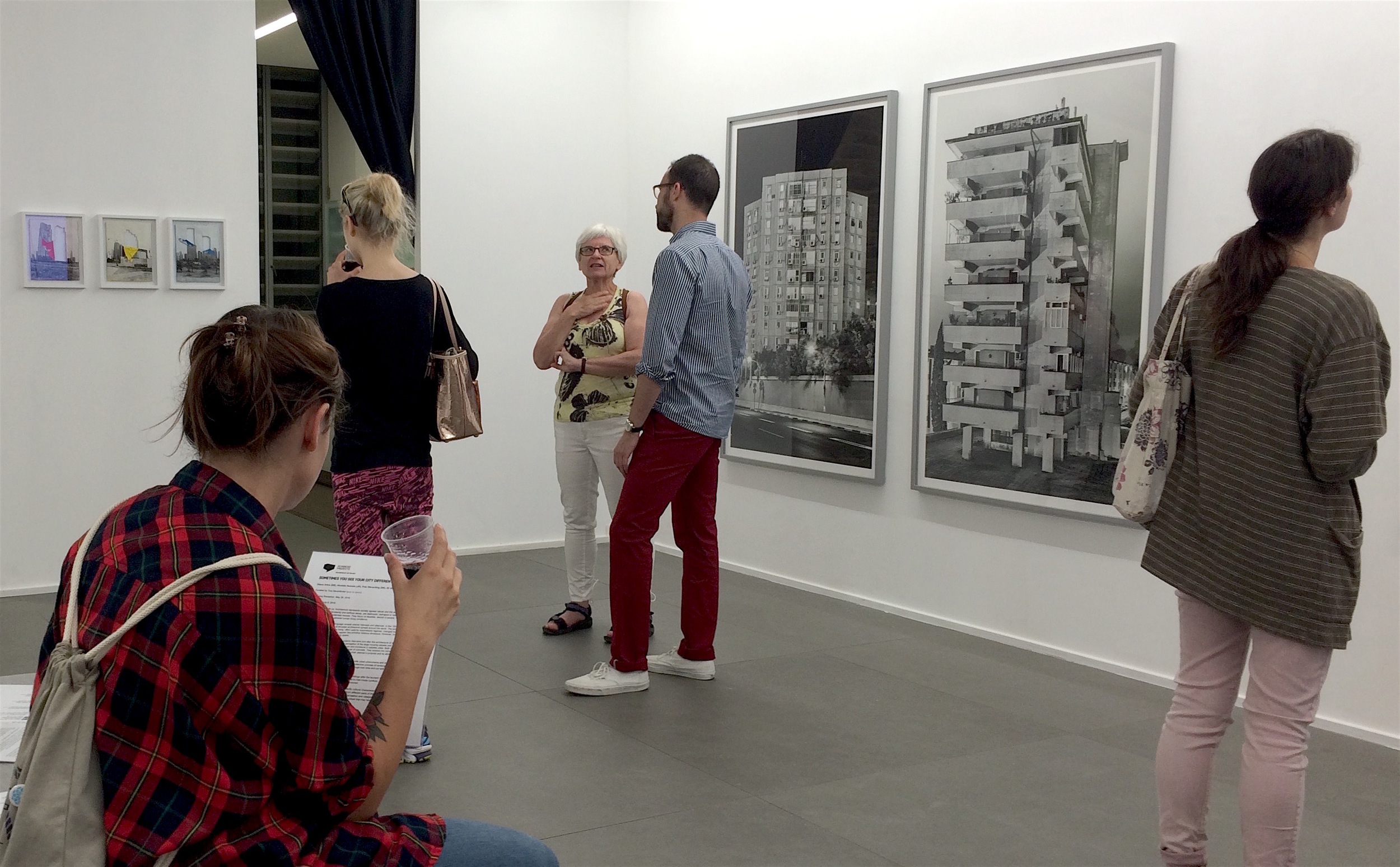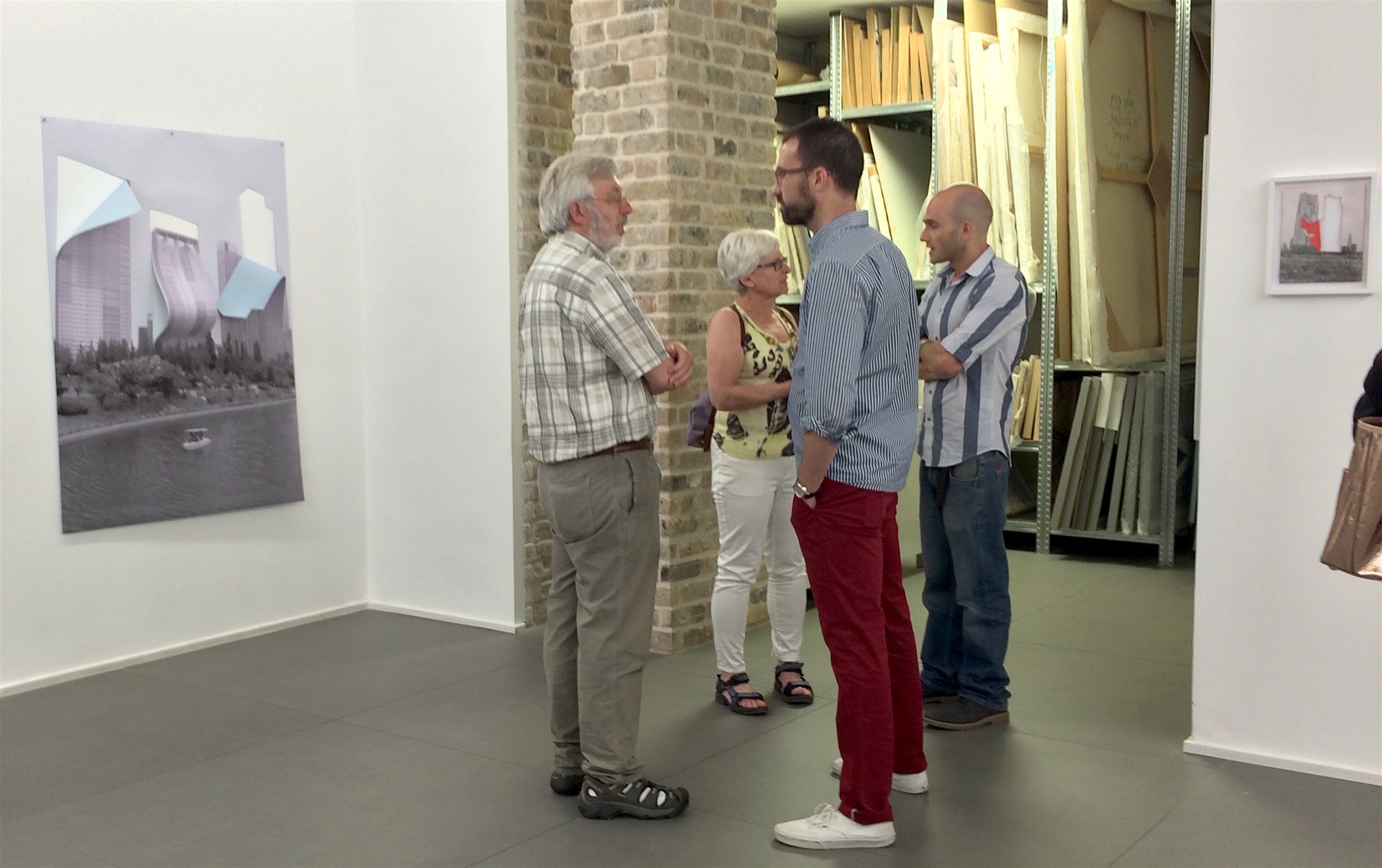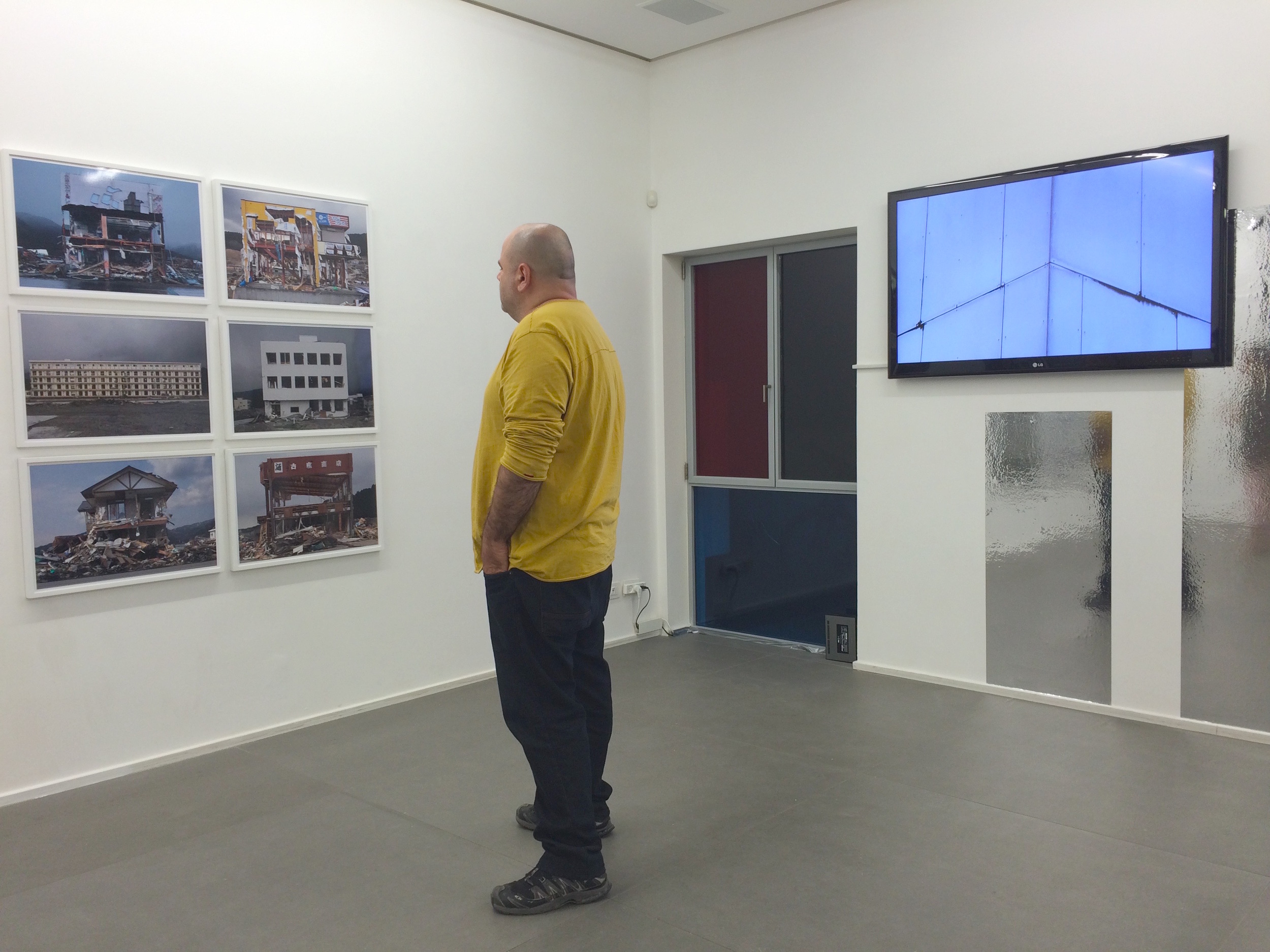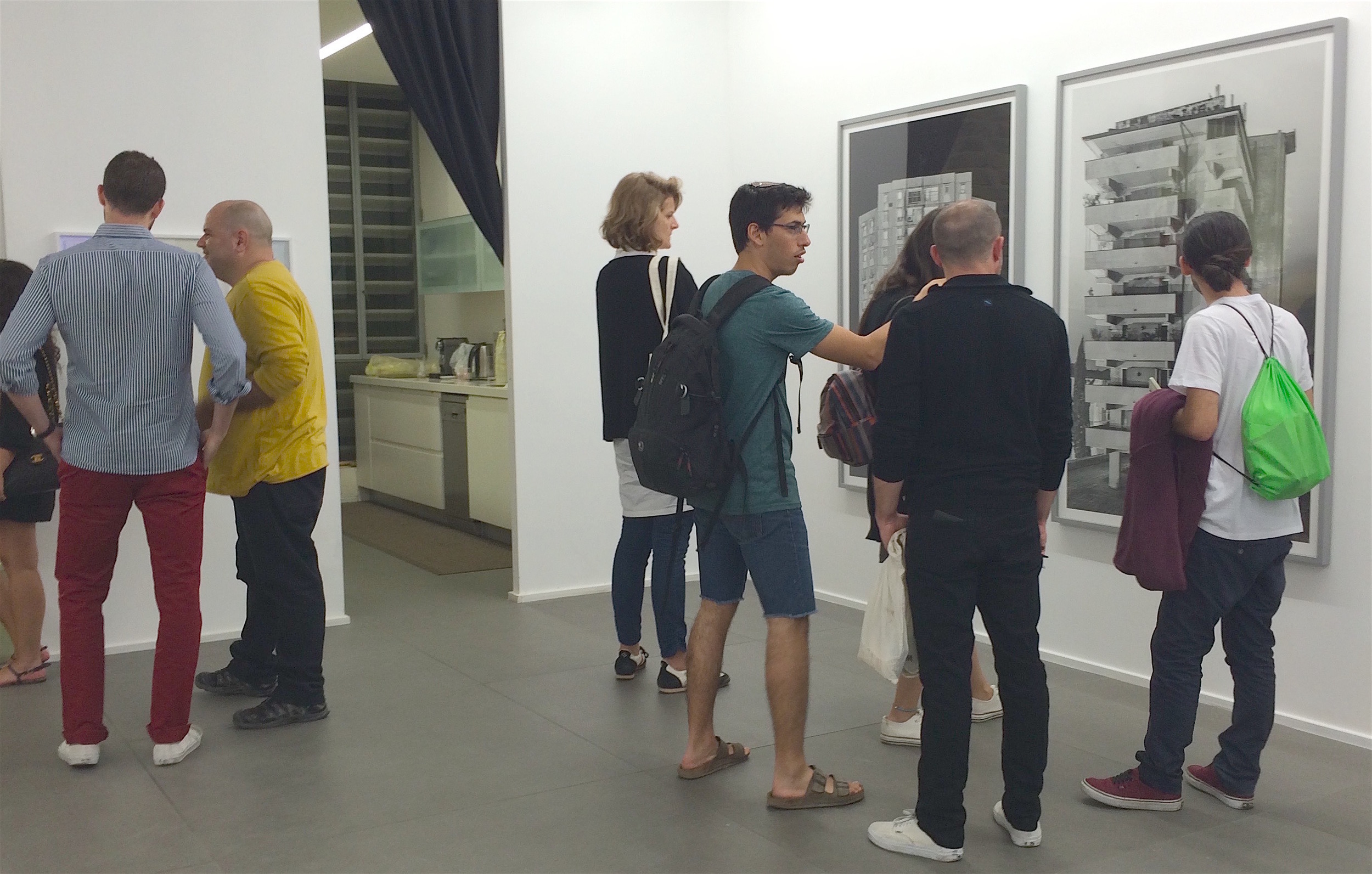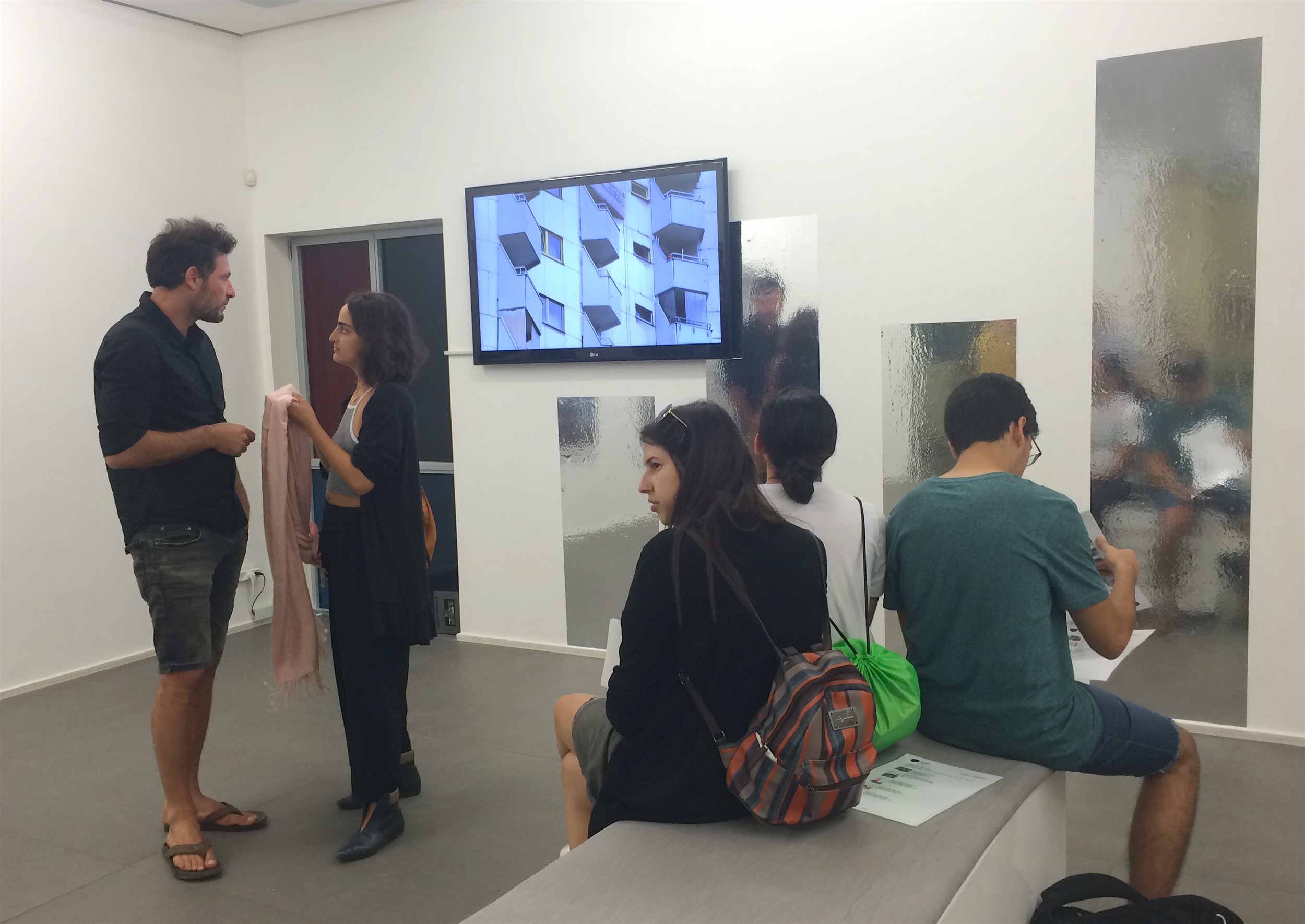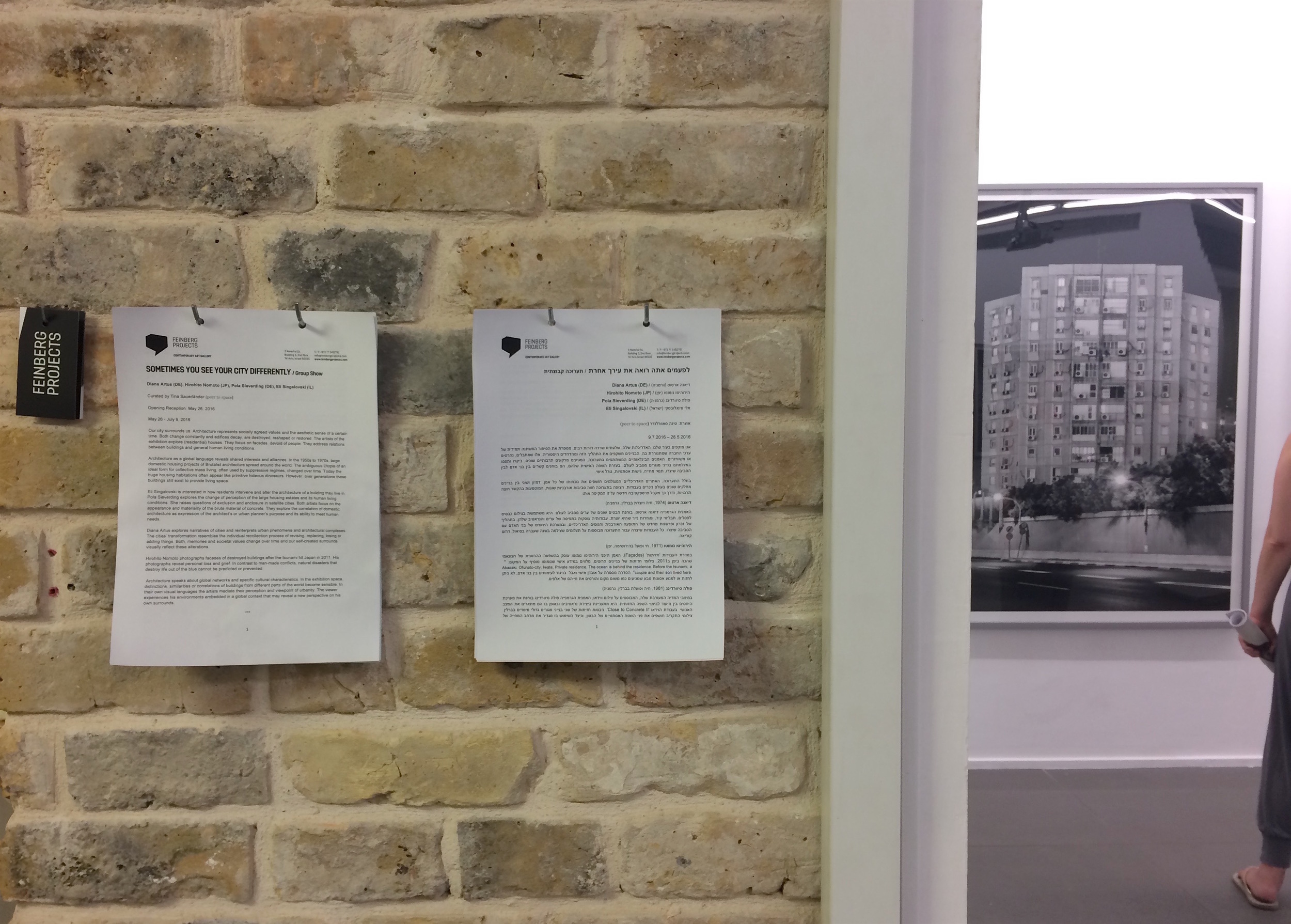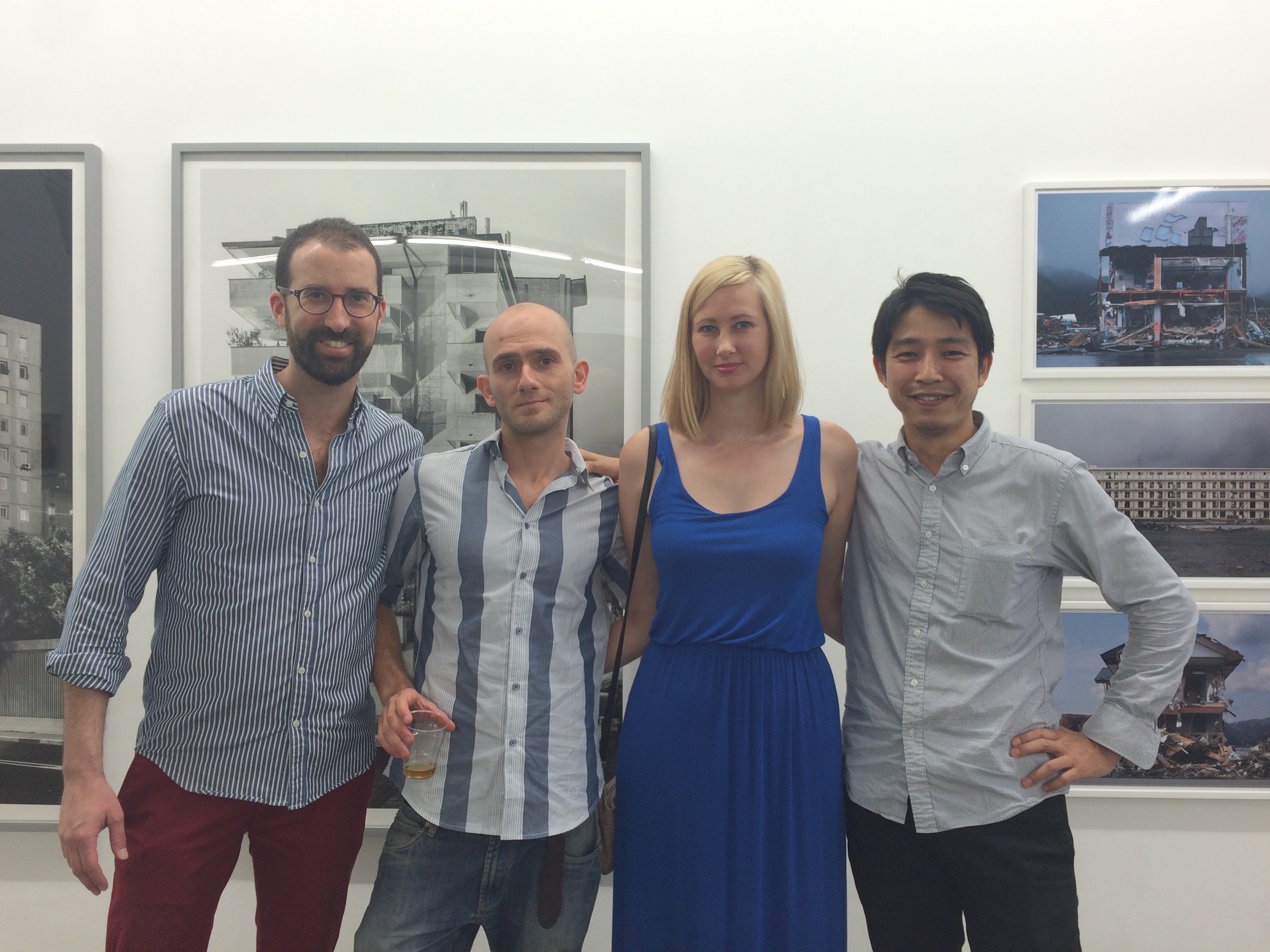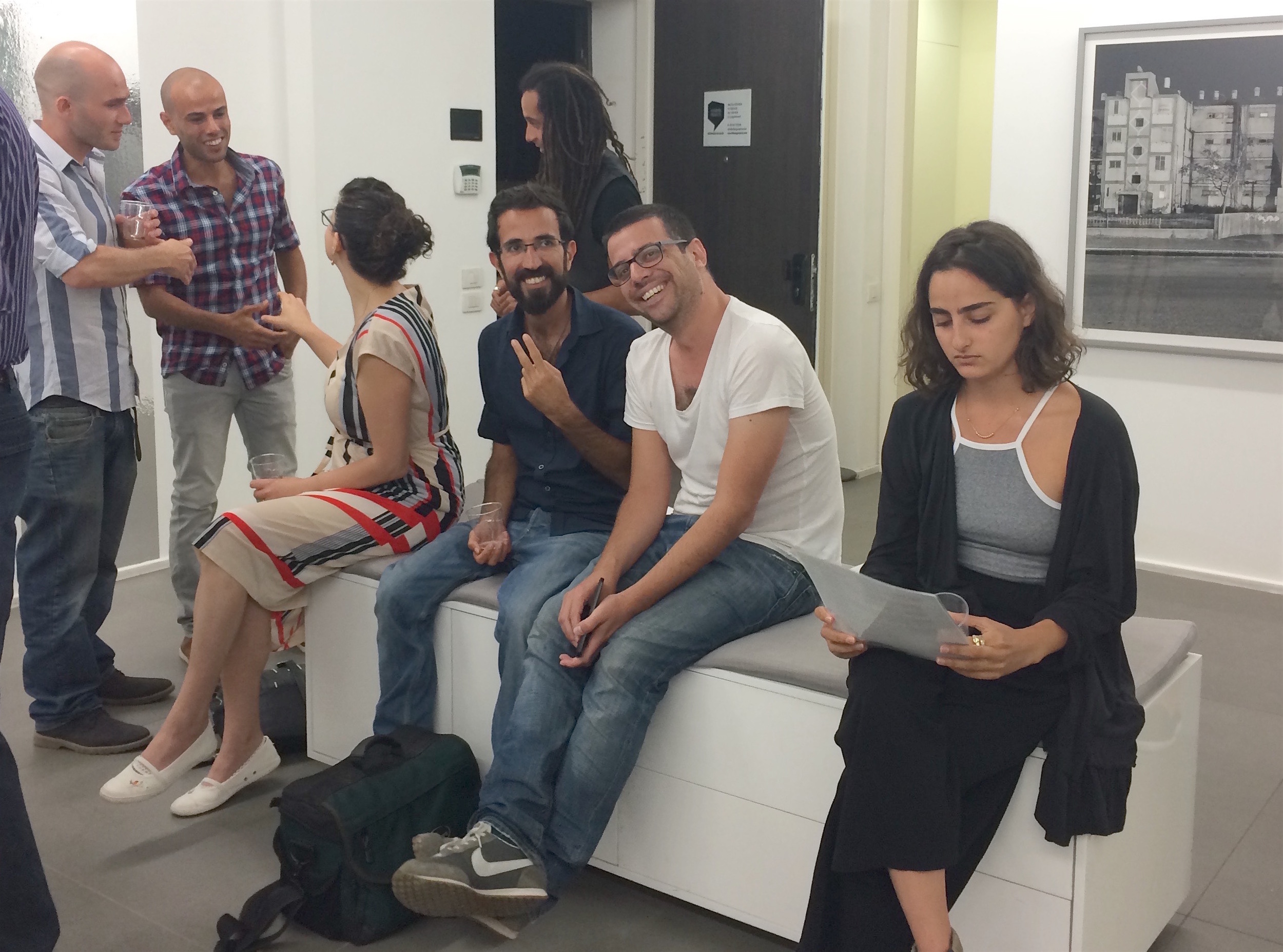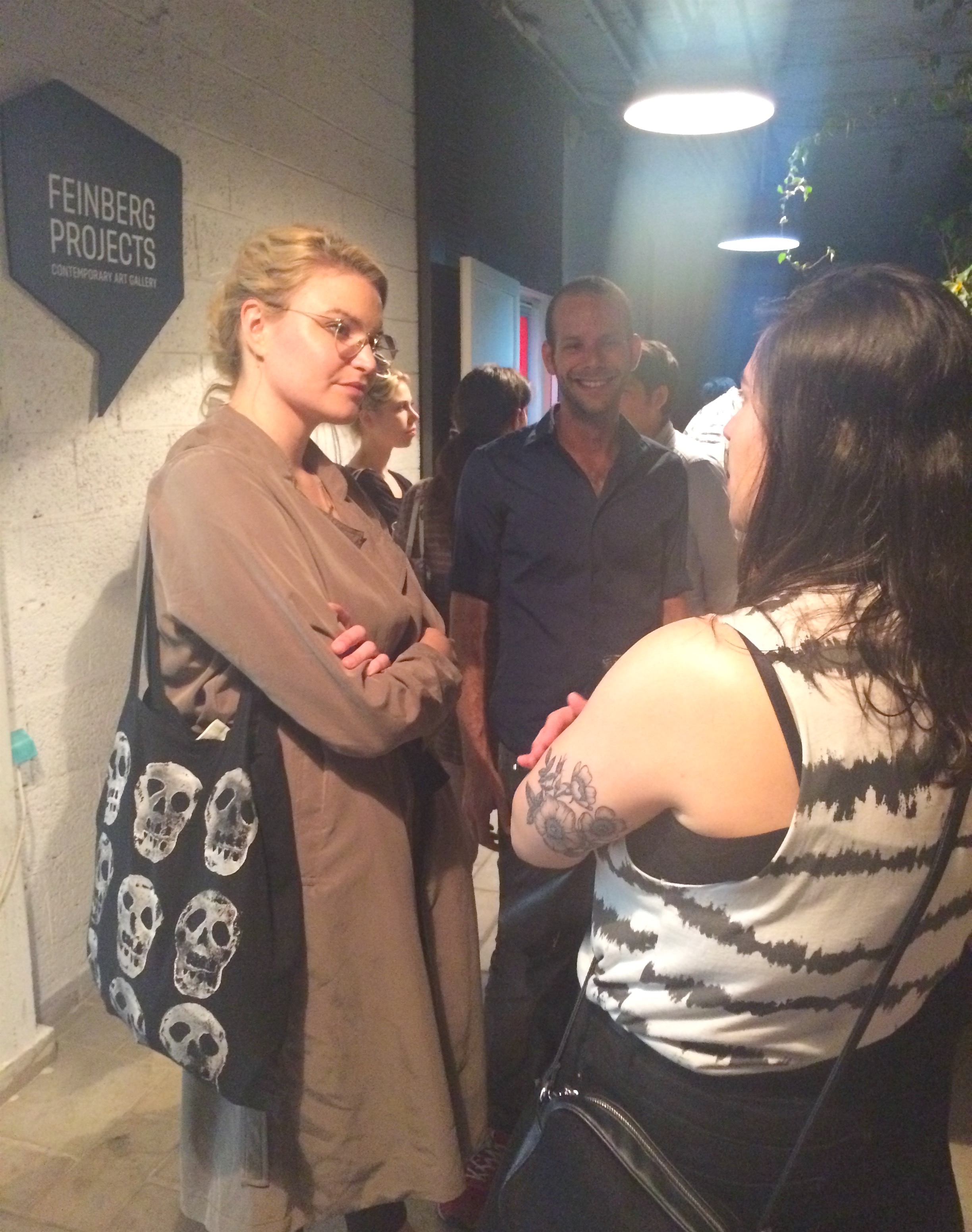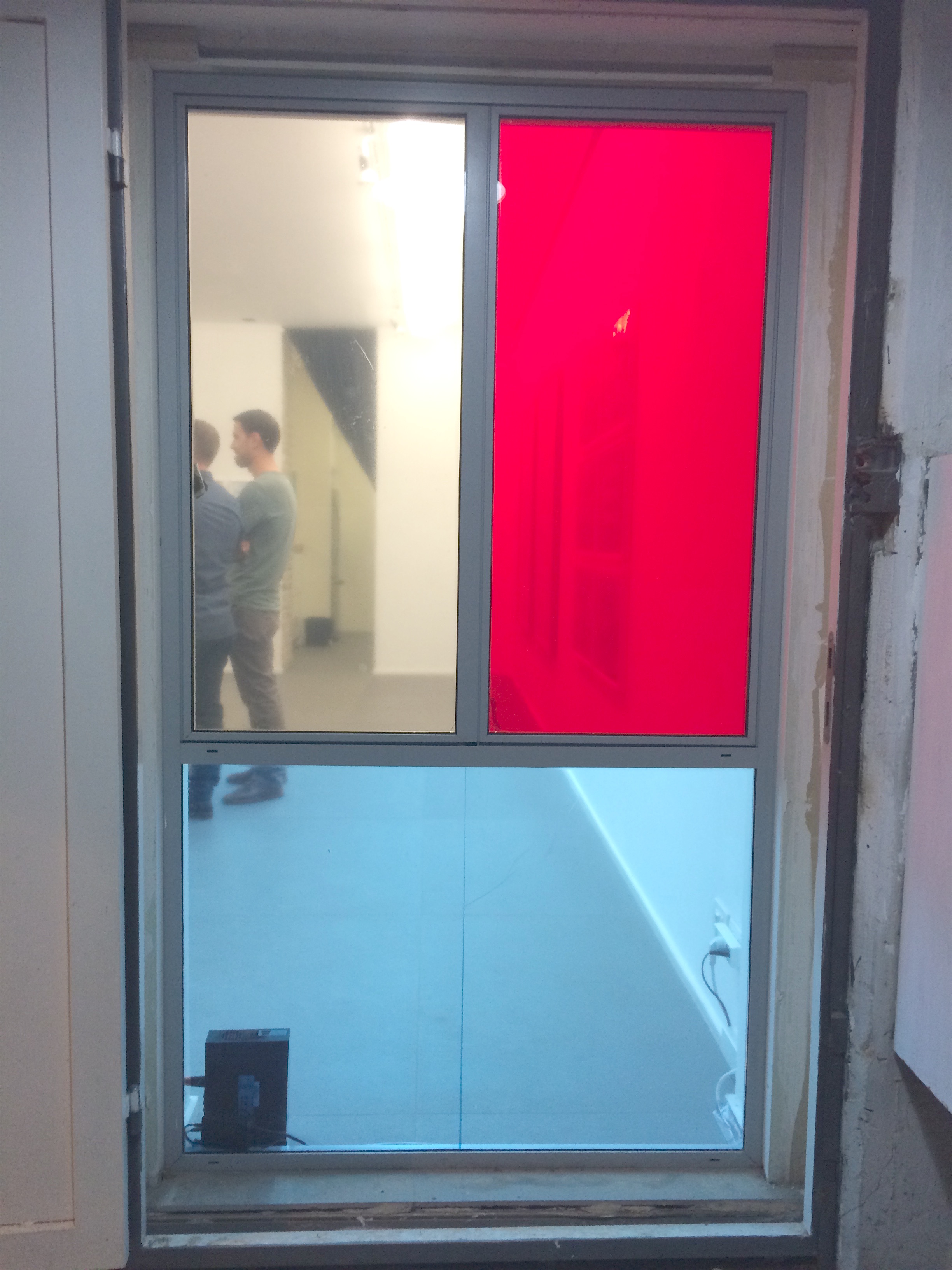Hirohito Nomoto, Façade 11, 2011, Lambda print, 42 x 61,9 cm, from the series Façade, According to the signboard, it appears to be a100 yen shop. Details unknown.
SOMETIMES YOU SEE YOUR CITY DIFFERENTLY
Works by: Diana Artus (DE), Hirohito Nomoto (JP), Pola Sieverding (DE), Eli Singalovski (IL)
Curated by Tina Sauerländer, peer to space
At FEINBERG PROJECTS, 3 Hamif’al St., 66535 Tel Aviv, Israel
Opening May 26, 2016
Exhibition from May 26 until July 9, 2016
Our city surrounds us. Architecture represents socially agreed values and the aesthetic sense of a certain time. Both change constantly and edifices decay, are destroyed, reshaped or restored. The artists of the exhibition explore (residential) houses. They focus on facades, devoid of people. They address relations between buildings and general human living conditions.
Architecture as a global language reveals shared interests and alliances. In the 1950s to 1970s, large domestic housing projects of Brutalist architecture spread around the world. The ambiguous Utopia of an ideal form for collective mass living, often used by suppressive regimes, changed over time. Today the huge housing habitations often appear like primitive hideous dinosaurs. However, over generations these buildings still exist to provide living space.
Eli Singalovski is interested in how residents intervene and alter the architecture of a building they live in. Pola Sieverding explores the change of perception of the large housing estates and its human living conditions. She raises questions of exclusion and enclosure in satellite cities. Both artists focus on the appearance and materiality of the brute material of concrete. They explore the correlation of domestic architecture as expression of the architect’s or urban planner’s purpose and its ability to meet human needs. Diana Artus explores narratives of cities and reinterprets urban phenomena and architectural complexes. The cities’ transformation resembles the individual recollection process of revising, replacing, losing or adding things. Both, memories and societal values change over time and our self-created surrounds visually reflect these alterations. Hirohito Nomoto photographs facades of destroyed buildings after the tsunami hit Japan in 2011. His photographs reveal personal loss and grief. In contrast to man-made conflicts, natural disasters that destroy life out of the blue cannot be predicted or prevented.
Architecture speaks about global networks and specific cultural characteristics. In the exhibition space, distinctions, similarities or correlations of buildings from different parts of the world become sensible. In their own visual languages the artists mediate their perception and viewpoint of urbanity. The viewer experiences his environments embedded in a global context that may reveal a new perspective on his own surrounds.
INFORMATION ABOUT THE ARTISTS
Diana Artus, Drop out buildings, 2015, Installation view
DIANA ARTUS (*1974, lives and works in Berlin, Germany) : The German artist Diana Artus explores different aspects of cities around the globe. She uses photography as a basic tool for her sculptures, wall reliefs or cut-outs. The perception of cities and its narratives, the process of memory and the reinterpretation of urban phenomena and architectural bodies – in short: the relationship humans have with their self-created surroundings – are the focal points of her artistic interest. The works she created for the exhibition are all based on photographs the artist took in Seoul, South Korea, last year.
HIROHITO NOMOTO - image above - (*1971, lives and works in Hiroshima, Japan) : In his series Façade, Japanese artist Hirohito Nomoto deals with the disastrous impact of the tsunami that hit Japan in 2011. His photographs of the facades of destroyed buildings are accompanied by personal information about the place: “Akazaki, Ofunato-city, Iwate, Private residence. The ocean is behind the residence. Before the tsunami, a couple and their son lived here.“ The series tells about personal loss and grief. In contrast to manmade conflicts, natural disasters that destroy life of thousands out of the blue, cannot be predicted or prevented.
POLA SIEVERDING (*1981, lives and works in Berlin, Germany) : In her mixed media installations based on photography and video German artist Pola Sieverding explores the relationship between documentation and staging in visual language. She is interested in the creation of narratives and their depiction of human living conditions. Close To Concrete II shows façades of two large-scale housing estates in Berlin. The close ups reveal the esthetic surface of the concrete and how its usage defines the living space of inhabitants. At the same time Close To Concrete II communicates the change of perception of the large (brutalist) housing estates from a democratic utopia to an anachronistic, brute relic.
Eli Singalovski, Wingate 21, 2014, Archival Pigment Print, 100x150 cm
Pola Sieverding, CLOSE TO CONCRETE II, 2014, HD video, sound, 15'20'', Loop © Pola Sieverding, VG Bild-Kunst
ELI SINGALOVSKI (*1984, lives and works in Tel Aviv, Israel) : The works by Israeli artist Eli Singalovski deal with (often residential) architecture mainly in Israel and Europe. He is interested in the phenomena of how residents intervene and alter the architecture of a building they live in. The artist avoids focusing on a specific population or country, but shows that this behavior is all too human and therefore widespread and common in the entire world. The long-exposure nocturnal photography, and the transition to black and white, allow to some extent the isolation of the buildings from their surroundings and creates a sculpture-like appearance.
Installation view, works by Eli Singalovski and Hirohito Nomoto
THE OPENING
